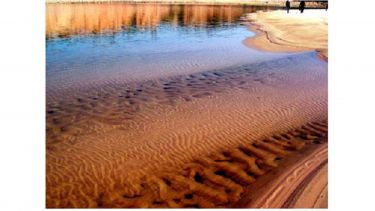Instability theory
So what do we mean by an instability theory of subglacial bedform generation?

If you look at, or map and quantify, subglacial bedforms it is obvious that they are not just individual features (e.g. a drumlin) but are part of a "field" or pattern with elements that repeat and with preferred sizes or spacings (as demonstrated by uni-modal frequency distributions in say length, spacing etc).
We argue that this consistency in form and pattern is indicative of a primary formational mechanism which operated widely at the base of ice sheets.
Similar consistency in pattern is common in nature, where there are features that are widespread, repetitive and organised into dominant wavelengths.
Such wave pattern formations in natural systems are frequently driven by instabilities (i.e., a mechanism that can amplify small disturbances in the system) and it is well established, for example, in aeolian and fluvial geomorphology, that dunes and other bedforms are created through an instability generated by the interaction of the fluid flow with the underlying bed [e.g., Hersen et al., 2004; Elbelrhiti et al., 2005; Komarova and Hulscher, 2000].
Other examples are the Rayleigh-Taylor instability which occurs any time a dense heavy fluid is being accelerated by a light fluid [Sharp, 1984], the Kelvin Helmholtz instability which drives some cloud formations [Drazen, 2002] and the Rayleigh-Be´nard instability, which is known to control convection plumes in fluids [Getling, 1997].
Since subglacial bedforms display pattern characteristics that are similar to other instability phenomena, we argue that the primary mechanism of genesis is an instability and are simply extending this idea to the flow of ice over a deforming substrate.
We strongly suspect that an instability mechanism exists that can amplify small disturbances in the flow, erosion or deposition of till in the subglacial environment.
